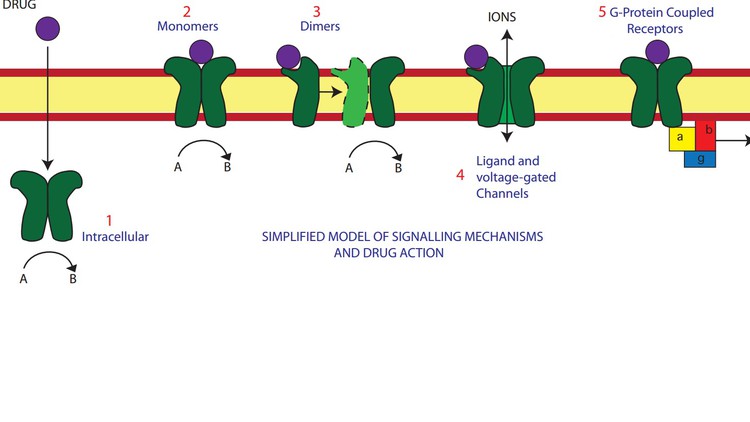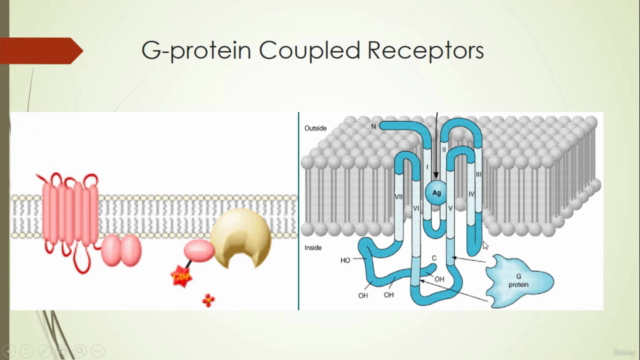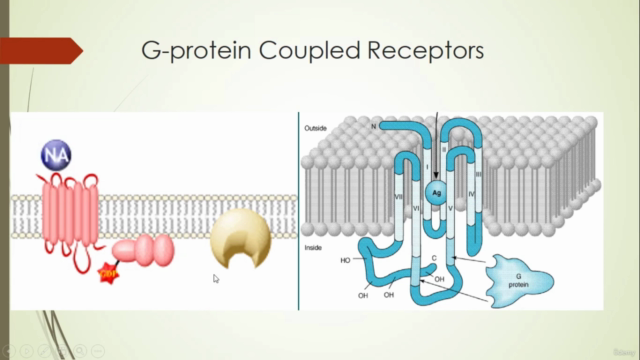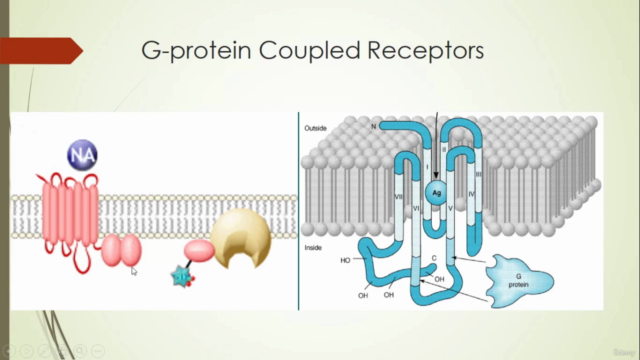Introduction to Receptor

Why take this course?
🧠 Dive into the World of Receptors: Introduction to Receptor Biology
Course Definition:
Receptors are essential biological molecules found on cell surfaces or within cells that recognize signal molecules (ligands) and trigger responses, without altering their own function. For instance, G-protein coupled receptors (GPCRs) are a prime example of this. They play pivotal roles in both physiological and pharmacological processes.
Key Concepts:
Agonists and Antagonists
- Agonist: An agent that activates a receptor to produce an effect similar to the physiological signal molecule, such as muscarine and nicotine.
- Antagonist: A substance that prevents agonists from binding to their receptors or blocks their effects, like atropine and muscarine.
- Inverse Agonist: An agent that activates a receptor in the opposite direction to that of the agonist, exemplified by DMCM in benzodiazepine receptors.
- Partial Agonist: An agent that binds to a receptor and elicits a submaximal effect but can also inhibit full agonist responses, as seen with various opioids.
- Ligand: A molecule that binds selectively to a receptor without necessarily triggering a response, displaying only affinity.
Functions and Domains of Receptors:
Receptors are multifaceted, with two primary domains:
- Ligand Binding Domain: Recognizes specific ligands.
- Effectors Domain: Undergoes a conformational change upon binding to initiate the signal transduction process.
Classification of Receptors:
Receptors can be classified through:
- Pharmacological Criteria: Based on the relative potencies of different agonists and antagonists.
- Tissue Distribution: Identifying subtypes present in different tissues, like β1 receptors in cardiac tissue and β2 in bronchial tissues.
- Ligand Binding: By measuring the specific binding of radiolabelled ligands to cellular fragments and observing displacement by selective agonists or antagonists.
- Transducer Pathway: Understanding the mechanism through which activation is linked to responses, such as G protein-mediated or ligand gated ion channels pathways.
Regulation of Receptors:
Receptors are subject to three main forms of regulation:
- Upregulation: An increase in receptor number on the cell surface.
- Downregulation: A decrease in receptor number due to prolonged activation.
- Desensitization: A reduction in responsiveness over time, despite constant ligand presence.
Types of Receptors and Transducers:
Receptors are categorized into three main types based on their association with first messengers:
- Ion Channel Receptors: These include neurotransmitter receptors like the GABA receptor.
- G-Protein-Linked Receptors: This extensive class of receptors transduces signals via G proteins.
- Enzyme-Linked Receptors: These receptors are linked to enzymes and are responsible for initiating signal transduction through phosphorylation events or other biochemical changes.
Transducers in Action:
The term 'transducer' generally refers to the mechanism through which the first effector is activated, most commonly being G proteins. These transducers are crucial for converting the initial signal into a cellular response.
Clinical Relevance:
Understanding receptors and their functions is vital in medicine, as many drugs act by either mimicking endogenous ligands or blocking their actions to treat various conditions. This course will provide a solid foundation for grasping the intricacies of receptor biology and its applications in clinical settings.
Join us on this comprehensive journey through the fascinating world of receptors, where you'll learn how they define, interact, and regulate our body's responses to various signals. Enroll now and unlock the secrets of receptor biology! 🎓✨
Course Gallery




Loading charts...